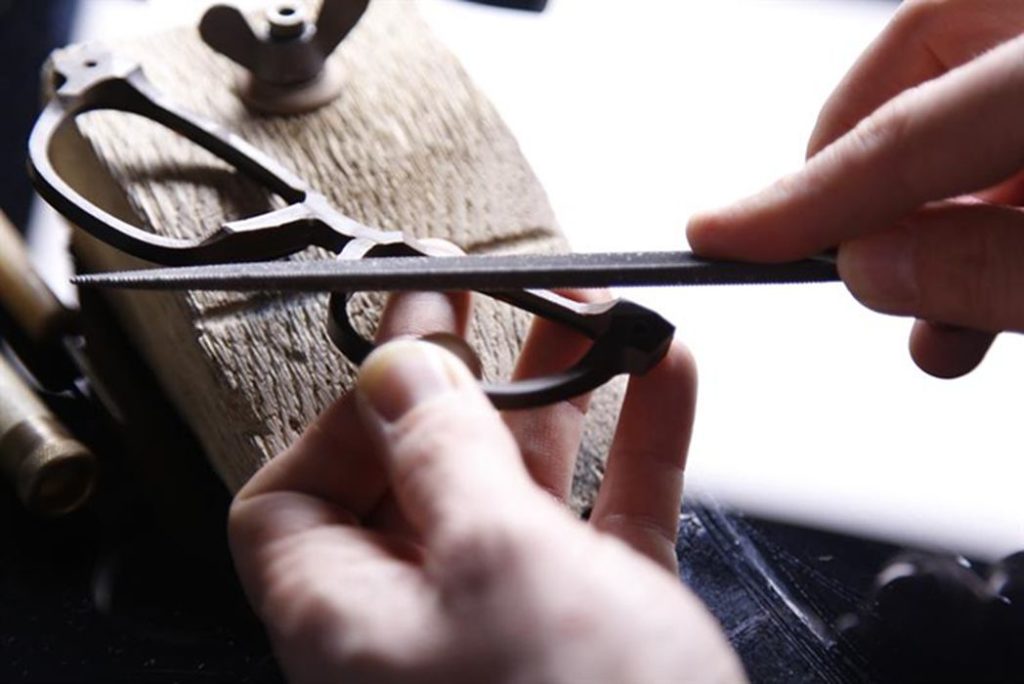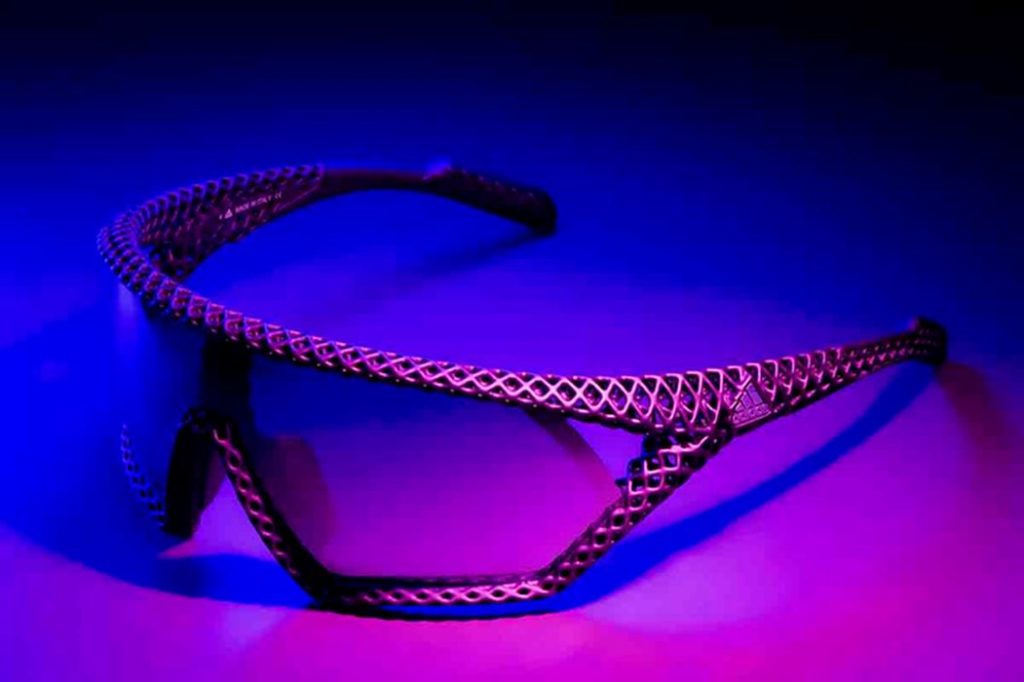
Charles R. Goulding and Preeti Sulibhavi look at eyewear companies leveraging 3D printing for fashion products.
Marcolin, an Italian fashion eyewear company, has strategically carved out an interesting eyewear niche.
While Luxottica, the eyewear goliath, has dominated the highly accessible, brick-and-mortar retail segment with numerous retail brand locations, Marcolin has focused on providing high-end eyewear mostly for leading fashion houses. Brands include Tom Ford, Timberland, Adidas, Kenneth Cole, Tod’s, Candie’s, MaxMara, Longines, and more. What is interesting is that many of these fashion brands utilize 3D printing for their core product lines.
Adidas

In collaboration with Marcolin, Adidas has just released its futuristic-looking 3D printed pair of sunglasses called Adidas 3D CMPT. This piece of eyewear is printed using a 3D printed Nylon structure that has been finished with a special rubberized coating. While the arms of the frame aren’t foldable like normal sunglasses, the frames are extremely lightweight with partial thanks to the polycarbonate lenses that are cleanly integrated into the frames. Adidas has been a major user of 3D printed technology for its footwear lines.
Kenneth Cole
Kenneth Cole is testing 3D printing technology. 3D printed and metalized in gold, Kenneth Cole offers custom Christmas Wreaths. Created from multiples of two of the company’s famous shoe styles, and 3D printed in position then illuminated by internal acrylic light strips, these gold metalized wreaths are both festive and high-tech.
Timberland
Timberland has been using 3D printing technology from Z Corporation / 3D Systems to help solidify its position as the avant-garde of outdoor-inspired footwear. In fact, the company has reduced product development time by 33% with 3D printing technology. Timberland has turned to full-color 3D printed prototypes for product development and has been saving time and money doing so.
The Research and Development Tax Credit
The now permanent Research and Development (R&D) Tax Credit is available for companies and startups developing new or improved products, processes and/or software.
3D printing can help boost a company’s R&D Tax Credits. Wages for technical employees creating, testing and revising 3D printed prototypes can be included as a percentage of eligible time spent for the R&D Tax Credit. Similarly, when used as a method of improving a process, time spent integrating 3D printing hardware and software counts as an eligible activity. Lastly, when used for modeling and preproduction, the costs of filaments consumed during the development process may also be recovered.
Whether it is used for creating and testing prototypes or for final production, 3D printing is a great indicator that R&D Credit eligible activities are taking place. Companies implementing this technology at any point should consider taking advantage of R&D Tax Credits.
Making a Spectacle
When eyeglasses became eyewear, the trend had reached a different level of zeitgeist. People see themselves in the eyewear they select and want it to be an expression of who they are. 3D printing can help achieve this and create a more lightweight, intricately designed product.
